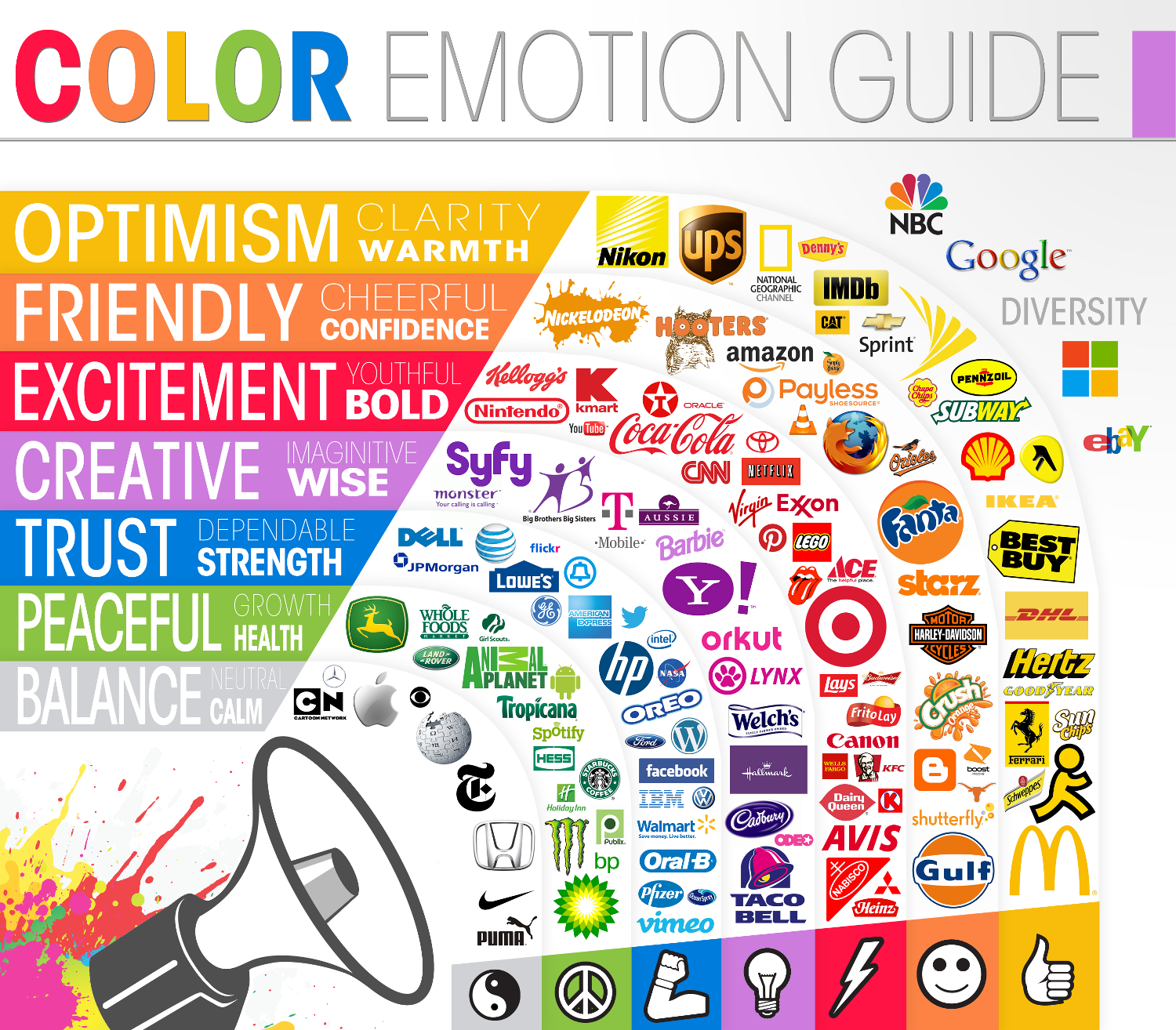
List of Top Branding Strategies for Small Businesses

How often is it that we see a brand find a permanent place in our daily vocabulary? From time to time, don’t we find ourselves asking a friend to “Google” it or get a “Xerox” of something without a second thought? Such brands have so distinctly established themselves in our lives with effective branding and a solid marketing strategy that their names have effectively taken over the very actions they perform for us.
However, branding or brand recognition to be specific is not just for large companies, it is for anyone who is trying to build a success story for themselves. It may be a small business owner, local businesses, or a comparatively bigger business- getting one's own brand identity is crucial for reaching your target market. As Richard Branson famously tweeted-
“A big business starts small..”
So, in an increasingly crowded marketplace, distinguishing your brand/business from the rest is only one job done. The other part is the perception/image that people would generally have about you. That is the trust factor - not just whether to buy from your brand or not but the very idea that people have when your brand name comes in.
Want to know more about building your business? Read our weekly newsletters or subscribe here.
What is Branding and Why is it important for your Business?
As defined by Investopedia, a brand refers to business and marketing concepts that help people identify a particular company, product, or individual. Apart from creating identities within a marketplace, branding techniques add value to a company and a competitive advantage over others in a similar industry category.
Strong branding is an essential element in the foundation of your business. Whether you’re launching a new one or looking to revamp for relevance, effective branding gives you an immediate edge in the market.
This can be especially tricky for small businesses, or anyone who opts for online marketing strategies to navigate through uncertainty as new enterprises face enormous challenges in building trust in the initial years. Maybe you deliver the best of services and put together the ideal team. It may still be daunting to get the desired attention from your target audience to trust your business. That is unless you adopt an effective branding strategy that helps your brand connect to the people, understand their needs, and deliver on your promises.

But before you go about building your brand, it’s important to answer one question “How does your offering resonate with your target audience?”
It's a fundamental question with three core stopovers -
- The Product/Service
- The Perception
- Target Consumer Base
This article will guide many enterprising small business owners and startups to crack the code of business branding. If these branding tips are followed religiously, your business will surely get the desired credibility, engagement, and recognition.
How to create a powerful branding strategy for a Small Business?
- Know the ins and outs of what you sell
- Identify your target customers
- Keep up with the competition
- Create a visual brand identity
- Communicate a brand story
- Devise a good content strategy
- Lookout for partner programs/affiliates
- Establish a user-friendly payment platform
- Deepen customer connection
Let’s try and understand each of these tips to small business branding in detail -
1. Know the ins and outs of what you sell
The first step in creating a brand is to know what you offer in totality. What you sell should be equivalent to what you believe in. Hence, it is about figuring out your brand’s mission and vision. Since it is already a populated market, positioning your brand right is crucial. It includes a range of factors like how you would want your potential customers to perceive you, your company's goals, and what gaps are you filling in to strike a major difference among similar brands. Say, if you are into the fitness business, your lifestyle extends to this whole idea of health and fitness. Else how will it resonate with your target audience? Your brand needs to boldly cater to the solutions that your customers are seeking. Since the impression your business leaves on your customer’s minds gives you the ability to influence their choices, it is important to correctly position or style your services making the most sense to both you and your consumers.
2. Identify your target customers

We wouldn’t be surprised if it had already crossed your mind. Who are you catering to? Are you focusing on a specialized group or people across different groups? Understanding this requires an in-depth study into the various types of target groups. You can build your own creative user/buyer personas to help you design your services and know your target groups. These groups are generally formed on the basis of financial, sociological, physiological, psychological, and environmental factors. Buyer personas based on these groups are fictional but realistic portrayals of a target user and help any business to get into the psyche of their potential customer base. It is essential to find the motive behind someone using your services and present it as a solution. Identifying your target customers is key to setting the right tone and building your strategy!
3. Keep up with the Competition

Knowing your competitors within a certain industry is crucial. First, it gives you an impression of what is preferable and what is not. Secondly, not knowing what your competitor is offering could either lead you astray or duplicate your services and brand positioning that takes such a great amount of hard work! You certainly wouldn’t want to get lost amidst the glut of established names in the market. It is actually essential to research your competitors because they have sustained this long for some REASON! Thirdly, evaluating your business alternatives makes you learn from their strengths and weaknesses, helps you improve your brand position, and tactfully fills in the gaps your competitors might have missed. It is vital to address the ‘point of difference’ - the element that sets you apart from your rivals and attracts your customers to subscribe to your brand.
4. Create a visual Brand Identity

If a brand is more than something that makes you stand out, visualizing attributes like the name, logo, slogans, fonts, graphics, voice, delivery, and product feel is something to start with.
Your brand begins to shape up as you finally narrow down the design details. This includes the business name, the logo, the taglines, color and fonts, the webpage layout, and all customizable detailings. It has to be well thought out as it marks your identity as a business and has to be consistent with your brand. There are some online tools, such as a business name generator or a logo maker, that can help you while starting your business.
There should be a thoughtful choice of color as they can have multiple meanings. The Logo Company shows how the psychology of color works in logo designing.

Source: The Logo Company
As colors evoke emotions, they could be used sensibly during branding, brand awareness, or rebranding exercises. For example, green could mean clean freshness, eco-friendly or growth, etc; Black could mean associated elegance and boldness. Hence finding the right fit according to your business personality is crucial. Hence, getting the brand color palette right would certainly help mirror the brand voice and reach your target customer!
The second part of it is how you fit the logo with the color and font. For logos, it could be either an icon or a letter mark/wordmark logo or a combination of both. Small businesses should start with a wordmark or a combination of both an icon and wordmark, so people remember your brand name. As your business and reputation grow, your logo organically becomes identifiable. Business slogans are another essential aspect of your branding. Keep your lines short, catchy, something that gives meaning to your service and speaks to your target customers. The ideal brand grows strong in the eyes of the audience that communicates with them. Hence visual attributes could have massive first-time impressions.
Read Why Health and Fitness Brands Need a Great Logo
5. Communicate a Brand Story

All businesses start with a story. It doesn’t necessarily have to be dramatic, but one that speaks about the struggles, the fight, the win, etc. Works as a great marketing plan. Why? Because a story has emotions, identity, and most of all talks about solving pain points. If your story addresses any pain point, then it means that your brand/business is directed towards some goals. And, one of the aspects of the goals is identifying problems and committing to solving them, something that your target audience is exactly wanting from you. This is the elevator pitch!
Brand stories speak about the business' integrity, commitment to the art, goals towards the community, and, most of all, connects you to your customers. In community-driven enterprises, it is all about people and their journeys. Sometimes the brand story could also be about your environmental concerns or charity drives. But whatever is the story, the emotional quotient does matter representing the value it is adding to their lives.
6. Devise an Effective Content Strategy

One of the most common myths of branding is that it is expensive. So, small businesses often feel they should not invest much in it while they start and that they can take up branding as they grow. Well, on the contrary, building a relevant content strategy or content marketing per se is actually smart and affordable for all kinds of businesses and helps in reaching their ideal customer.
A few things for especially for small businesses- you start with a smaller budget, lesser resources, and cannot afford, say, TV advertising, an effective content strategy sets the agenda to strengthen your brand value. It is super important for content creators to keep up with the context, understand customer queries regarding similar brands, disperse brand awareness, talk about business benefits, do keyword research making the brand visible via search engines, build a strong online presence with effective social media posts, leverage social media channels to as well as the general requirements. A new business or a local business could also rely on paid ads or highly targeted ads at times just to set the flywheel right. Finally, present different forms of content that address customer issues and find a solution. It is an ever-changing environment, so being dynamic and adjusting to changing demands is crucial. For example, anyone creating content for a fitness brand must make sure that the content strategy includes a healthy mix of everything from blog posts to Youtube videos and a steady store of social media content around the year- on exercises, fitness goals, diets to lifestyle, new trends, basically the whole bag of wax!
7. Look out for Partner Platforms or Affiliates
Building trust in your business or brand is something that has been repeatedly emphasized in this article. But when you are new in the field, how do you gain trust quickly? The way to accelerate this process is always to be on the lookout for non-competitive, auxiliary partners that will complement your business and result in strengthening your brand value.

Figure out partnership opportunities with other affiliates that your customers or potential ones already engage with. Such partnerships are essential to expanding your space in the market or engaging more effectively with your customers. Your auxiliary partner (a trusted e-commerce platform/website) will already have a value and visible existence in the market. They yield trust from their customer base and will also understand your business goals. It is the same as getting a spot in the local market to sell your handicrafts but on the much broader and far-reaching platforms offered by our digital spaces. Omnify has extended support to thousands of small service businesses as a partner platform and supported their expansion with robust business management software.
8. Establish a user-friendly Payment Platform
Because your brand at the end of the day is a cumulative sum of day-to-day interactions. Hence, measuring all facets of such interactions is pivotal. Providing your customers with a transactional system that is reliable, easy-to-use, safe, a convenient option of check-out- to simply put a simple, transparent and relevant payment method is super important. Say, streamlining your payments with Paypal or Stripe as popular e-commerce payment industries help make up for the perfect toolkit of payment methods offering payment flexibility.

These steps actually make a huge difference to your branding as well. It very well reflects that your brand has credibility, gives you fluidity in your billing workflow, and gives your clients the best booking experience- which could easily be translated into a great user experience!
Read How Omnify booking software helps Streamlining payments with Paypal and Stripe
9. Deepen Customer Connection
By now, with all the information, it must be clear how the connectivity quotient is significant to running any business - big or small. But this is especially true and incumbent for small businesses because your brand value thrives on your customers. There may be an ocean of potential clients, it's only how a current client feels about their customer journey that will help your brand get a positive spotlight. After all paying customers always expect assistance whenever they are stuck or have a problem! Building a large fitness business might take time, but a customer-responsive culture with a personal touch can accelerate your growth. Let customers believe they are dealing with humans, not robots. If your customers have a positive experience every time they interact with your support team, that will spread like wildfire and you get more customers.

The idea is to be memorable, not missing - so feel free! Nurture customer relationships that need more attention. Sweep them off their feet with an extraordinary customer experience that makes sense. Elaborate your contact page on your website, use social media, email marketing, and other related platforms, keep your support team ready every second - keep the communication going!
If you run a small business that requires you to manage daily bookings and scheduling, it can be challenging to expand and build a strong brand without streamlining your internal operations. Omnify has helped thousands of small businesses ramp up with an intuitive and customer-friendly interface and tons of time-saving features! Try us for Free!
As an effective branding strategy gives an immediate edge in a competitive market, this article brings a few tips for your small business to stand out.








